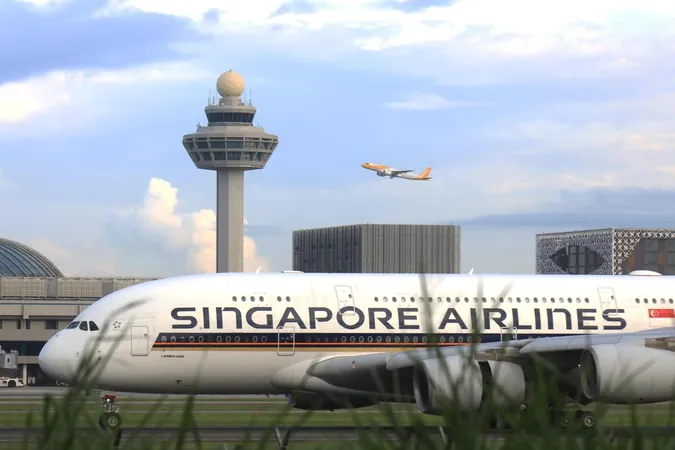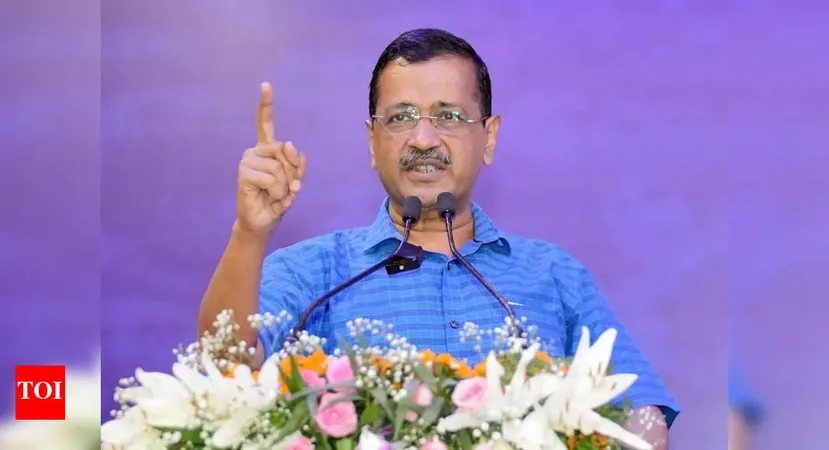
Is The Straits Times Ready to Lead the Global Media Charge?
2025-07-02
Author: Siti
A Vision for The Straits Times
In a bold assertion, the former editor-in-chief of The Straits Times (ST), Cheong Yip Seng, suggests that the renowned Singaporean newspaper should pivot to become a global media powerhouse, challenging what he terms the 'bias' of Western outlets. His perspective stems from decades of experience leading the nearly 180-year-old broadsheet, especially as a response to perceived hypocrisy in current Western journalism.
A Niche to Fill
Cheong's new book, "Ink and Influence: An OB Markers Sequel," advocates for ST to target a more affluent, international audience, significantly shifting its focus away from local news that is already well-covered by other media. He argues that this transition could position Singapore's national newspaper as a critical voice in the global discourse on geopolitics.
Echoes of Historical Visionaries
This concept isn't new. Cheong reveals that Singapore's first Foreign Minister, S. Rajaratnam, proposed a similar vision in the late 1960s, which was echoed by former Prime Minister Goh Chok Tong years later. Goh criticized ST’s dual approach, noting that while its local coverage appealed to the masses, its international reporting was of a higher standard, often followed by political leaders across the region.
Highlighting Western Double Standards
Cheong critiques Western media for its selective coverage, citing the uneven attention given to crises like the Ukraine war compared to the situation in Palestine. He points out how Western leaders may support human rights in principle but often fall short in meaningful action, exposing double standards in how international conflicts are reported.
The Case for Global Coverage
In light of these biases, Cheong argues that there is a pressing need for a non-Western perspective in journalism. He believes that ST’s evolution into a global outlet would not only elevate Singapore’s media profile but also match its prestigious reputation in finance and aviation.
Rising Star in Global Affairs
Singaporeans are increasingly influential on the world stage, participating in global forums and bringing local perspectives to international discussions. Cheong points to notable figures like ambassador-at-large Tommy Koh and renowned diplomats who have amplified Singapore’s voice globally, highlighting the potential for ST to do the same.
Seizing the Opportunity
Cheong argues that Singapore is uniquely positioned to create a global newspaper that reflects its status as a vibrant city-state. By focusing on international narratives that directly impact Singapore, such as disruptions in shipping caused by geopolitical conflicts, ST can carve out a respected place in the global media landscape.
A Strategic Shift Ahead?
Although there may be some initial dip in local readership, Cheong believes that forging a path toward a more robust global audience will prove fruitful. He asserts that this shift is necessary for Singapore's development and could enhance the nation's competitive edge in an increasingly interconnected world.
The Future of The Straits Times?
With the evolving media landscape and the urgent demand for diverse viewpoints, the question remains: will The Straits Times embrace this call to action and reshape itself into a leader on the global stage? Time will reveal whether Singapore’s storied newspaper will take this bold leap forward.




 Brasil (PT)
Brasil (PT)
 Canada (EN)
Canada (EN)
 Chile (ES)
Chile (ES)
 Česko (CS)
Česko (CS)
 대한민국 (KO)
대한민국 (KO)
 España (ES)
España (ES)
 France (FR)
France (FR)
 Hong Kong (EN)
Hong Kong (EN)
 Italia (IT)
Italia (IT)
 日本 (JA)
日本 (JA)
 Magyarország (HU)
Magyarország (HU)
 Norge (NO)
Norge (NO)
 Polska (PL)
Polska (PL)
 Schweiz (DE)
Schweiz (DE)
 Singapore (EN)
Singapore (EN)
 Sverige (SV)
Sverige (SV)
 Suomi (FI)
Suomi (FI)
 Türkiye (TR)
Türkiye (TR)
 الإمارات العربية المتحدة (AR)
الإمارات العربية المتحدة (AR)